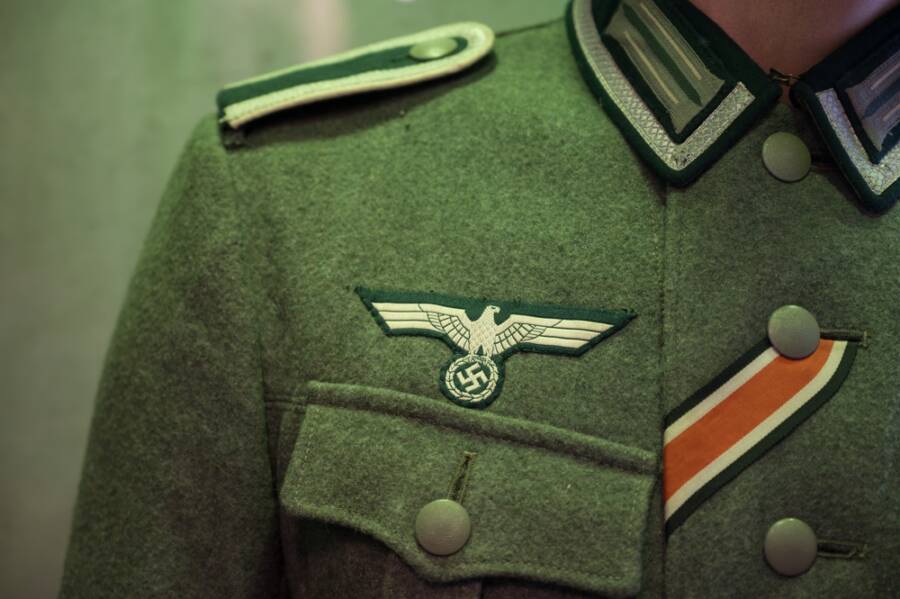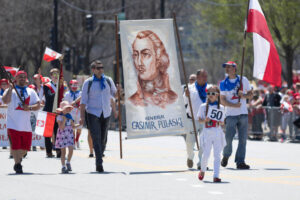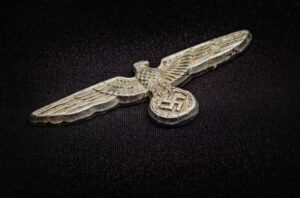These Nazi mysteries will give you chills down the spine
The Nazi regime was and will always be a mark in the world’s history, and while a ton of things were already discovered about it, there are still some “nazi mysteries” that are still under a huge question mark after almost 80 years.
Some included enigmatic actions carried out by the Nazis, while others featured twisted ideologies or compulsive hoarding of artwork and artifacts of significant spiritual or historical value. If you’re curious about what these Nazi mysteries might be, I welcome you to continue reading our article, and by the end of it, it would be awesome if we talked about it in the comments section.
So, without further introduction, let’s see what’s this about.

Geli Raubal shot herself or Hitler planned on getting rid of her…
Now that’s something that is included on the list of Nazi mysteries because even if everybody knew that Geli Raubal, Hitler’s niece, took her own life, there wasn’t an autopsy to check if this was true or not.
They had first met in 1928 when she was still a teenager, and soon after, he persuaded her to relocate to his house in Munich. Hitler ruled over her social life there, resulting in tense and dysfunctional interactions between them. It’s debatable whether or not their connection ever got intimate, but rumors about him forcing her to do things circulated a long while even after her death.
The Amber Room
The Amber Room, an exquisite and costly room that the Nazis had taken from Russia, vanished during the time of war. Its location is still one of the great Nazi mysteries, despite countless searches and speculations.
For those who don’t know about it, the Amber Room was a highly decorated chamber of the Catherine Palace of the Soviet Union, which was close to St. Petersburg. This unusual decoration, which included mirrors, gold leaf, and amber panels, was a gift from Germany to Peter the Great.
The Russians were unable to get the panels to safety before the Nazi invasion in 1941 advanced so quickly. The Germans swiftly seized them and brought them to Konigsberg, East Prussia. The Amber Room was first made visible to the public at the Konigsberg Castle, but it was later covered in fear of the Soviet invasion in 1945.
Although the location of this work of art was never found after the war, the majority of experts thought it was destroyed by the heavy bombardment that demolished the Konigsberg Castle.
The custom-made Nazi flag is still missing
Adolf Hitler launched the unsuccessful Beer Hall Putsch in Munich on November 9, 1923. This incident featured an illegal parade and a violent altercation that resulted in deaths. A deceased Nazi was covered by an enormous swastika banner that one of the Nazi participants was holding when it fell to the ground.
After Hitler was released from jail, the bloodstained flag was kept and given to him; it thereafter became a holy item that was used to consecrate other Nazi banners during significant party gatherings. During festivities, SS Sturmbannfuhrer Jacob Grimminger, a special caretaker, escorted the “Blutfahne” (Blood Flag).
The flag vanished after being spotted in the open for the final time in October 1944; its present location remains unknown.
Martin Bormann’s mystery
Alongside many other Nazi personalities, Martin Bormann was one of the closest people to Hitler. After Hitler and Eva’s suicide, Martin attempted to escape the Bunker and the Russians. Despite the chaos of the ongoing conflict in Berlin’s streets, Bormann joined a small group of Nazi officials who were trying to avoid being noticed by Soviet patrols. After becoming separated from Bormann and SS physician Ludwig Stumpfegger, one of these men, Artur Axmann, rushed back toward Bormann after coming across Russian forces.
Although Axmann asserts that he saw Stumpfegger’s and Bormann’s bodies for sure, neither Bormann’s body nor any evidence of it ever appeared. He was still convicted and received the capital sentence. Sounds like a good ending for a person who did so much evil in the world, right? However, Bormann never got caught, and even if there were found skeletons that were supposedly his and Ludwig Stumpfegger’s, only the latter was confirmed as his.
Later on in 1999, after being released to his family, Bormann’s remains were cremated and according to his family, the ashes were scattered over the Baltic Sea.
Nazi “ghost train”
The Nazis had the same problem every time they withdrew from territory they had acquired early in World War II: what to do with all of the jewels, artwork, and treasures pilfered from the conquered? Rumor has it that in the latter stages of the war, German authorities in the Breslau (now Wroclaw) region of Poland loaded up an armored train with this loot and drove it toward hidden tunnels in the Owl mountains. The train vanished sometime along the route; it is said to be hidden in a mountain tunnel at an unidentified place.
Even if no evidence is conclusive, many people believe this myth, saying that the Nazis might have hidden it pretty well if it didn’t show up by then. Oh well…

The fancy Nazi uniforms were really designed by Hugo Boss?
This is probably one of the biggest Nazi mysteries that deserves a proper spot in the article. The good news for those who own a handful of Hugo’s ties is that Boss did not create the eye-catching black couture worn by Himmler’s Death’s Head cult. Sadly, the tale doesn’t end there.
The first Hugo Boss established a clothes business close to Stuttgart in 1924, and from the party’s inception, it provided premade garments based on templates. In addition to providing comparable apparel to other groups, Boss joined the Nazi Party in 1931.
As business flourished, Boss promoted his company as an authorized provider of SS uniforms. When Boss was awarded contracts to produce military uniforms, business took off. He used abhorrent forced labor practices throughout the war, which were eventually approved in postwar trials.
Are you looking for additional information on this topic? Oh, I suggest you read this book! You can find the answers you seek in Nazi Secrets: An Occult Breach in the Fabric of History, which is available on Amazon in paperback and Kindle editions. Dive into the depths of Nazi technology, esoterism, but also uncover some unusual information. Consider purchasing it while it’s on sale if you don’t want to miss out on anything!
Himmler had a secret location in Wewelsburg
Heinrich Himmler and the SS made the imposing ancient castle at Wewelsburg, Germany, their headquarters in the early 1930s. Himmler thought the castle a fitting place to identify himself with the Teutonic rulers who had defeated the Slavs. Himmler wanted to enhance the cult of personality around his rebirth as a ninth-century Saxon monarch by merging ritual and medieval ceremonial at Wewelsburg.
Twelve pillars supported a single chamber that he built with a gas jet for the “eternal flame.” Another at the lower level has a massive, elaborate swastika attached to it. The latter was eventually intended to serve as a place of cremation for SS combat dead.
Are you new around? If you enjoyed reading this article, sit tight ’cause we have many more others you might enjoy. Take a look: These 7 Surprising Facts About the World Will Change Your Perception of Time!








